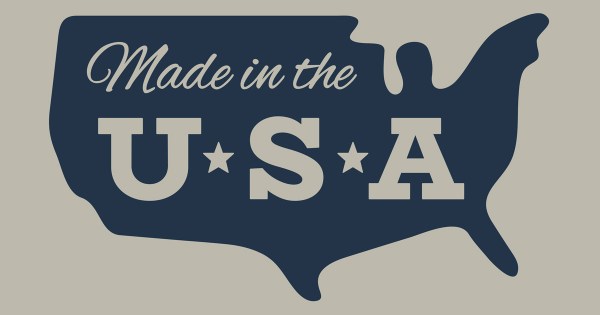The winds of global trade are shifting, and with the onslaught of tariffs, a familiar phrase is poised to gain even greater prominence in the marketing lexicon: “Made in the USA.”
For brands and consumers alike, this label carries significant weight. As tariffs potentially reshape supply chains and increase the cost of imported goods, the allure of a “Made in the USA” designation is set to intensify, presenting both considerable opportunities and significant risks.
The anticipated surge in this marketing approach necessitates a clear understanding of the regulatory landscape governing such claims. At the forefront is the Federal Trade Commission, which sets stringent guidelines to prevent deceptive marketing practices.
The cornerstone of the FTC’s approach—set forth in its Made in USA Labeling Rule and its companion, the Made in USA Enforcement Policy Statement—is the “all or virtually all” standard. This means that for a product to be designated “Made in the USA” (or synonymous words like “Built,” “Produced,” or “Crafted”), it must be wholly manufactured in the United States from materials that are also domestic in origin.
The FTC emphasizes that “virtually all” signifies negligible foreign content, and any exceptions must be minor or insignificant components. This high bar underscores the agency’s commitment to ensuring that consumers are not misled—either in advertising or on product labels—about a product’s domestic origin.
Navigating the nuances of manufacturing processes further complicates the “Made in the USA” designation; the FTC carefully considers the origin of both the component parts and the location of the manufacturing and assembly processes. Businesses must meticulously track the origin of every input, from raw materials to individual parts, and accurately represent the manufacturing journey of their products.
Consider a scenario where a writing implements company based in the U.S. sources wood for its pencils domestically but imports the graphite and rubber erasers. The presence of nonnegligible foreign components would likely prevent an unqualified “Made in the USA” claim. The company might, however, be able to qualify its claim, for example, by stating “Assembled in the USA with domestic and imported parts.”
The potential for legal and reputational pitfalls looms large for companies that fail to adhere to these regulations. Misleading “Made in the USA” claims can trigger FTC investigations, resulting in significant penalties for rule violations and mandatory corrective action.
Beyond legal repercussions, unsubstantiated claims erode consumer trust, a valuable asset that can take years to build and mere moments to shatter. False or misleading origin claims can spark public backlash, damage brand reputation, and ultimately impact sales. Accurate documentation, transparent labeling, and a thorough understanding of the supply chain are crucial safeguards against these risks.
Examining past National Advertising Division challenges involving major brands reveals common pitfalls and effective strategies for compliant messaging. For example, NAD has scrutinized claims where the percentage of domestic content was overstated or where the significance of foreign processing was downplayed. These cases underscore the importance of not only meeting the “all or virtually all” threshold, but also ensuring the overall impression conveyed to consumers accurately reflects the product’s origin.
To navigate this evolving landscape successfully, businesses should adopt best practices that prioritize transparency and accuracy. This includes:
- Avoiding implied claims: If your processes do not qualify for a “Made in the USA” claim, you cannot avoid the standard by instead claiming your products are of “True American Quality,” or prominently displaying the American flag or other U.S. symbols or geographic references.
- Accurate labeling: Clearly and conspicuously disclose the extent to which a product is made in the U.S., using qualified claims when necessary.
- Proper substantiation: Maintain robust records and evidence to support all “Made in the USA” claims.
- Regular review: Periodically review marketing materials and supply chains to ensure ongoing compliance with FTC guidelines and NAD precedent.
- Employee training: Educate marketing and sales teams on the legal and ethical considerations surrounding origin claims.
As the economic landscape shifts and the emphasis on domestic production intensifies, “Made in the USA” claims will undoubtedly become a more prominent marketing tool. However, businesses must tread carefully, ensuring their claims are not only legally compliant but also genuinely reflective of their manufacturing processes.
By understanding the regulatory framework, navigating manufacturing nuances with diligence, and prioritizing transparency, companies can leverage “Made in the USA” claims to build consumer trust and thrive in this evolving marketplace, while avoiding the pitfalls of misleading claims.


